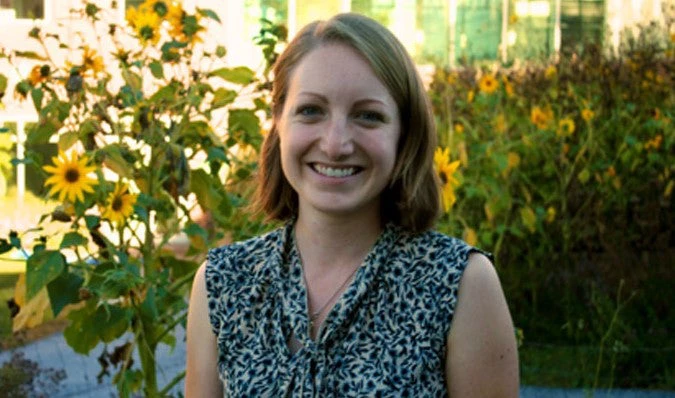 Member of Akilimali women association at work, Yanonge - DRC. Photo: Axel Fassio/CIFOR-ICRAF
Member of Akilimali women association at work, Yanonge - DRC. Photo: Axel Fassio/CIFOR-ICRAF
There is growing recognition that natural resource exploitation and environmental pressures can fuel violent conflict. Compounding this threat, situations of conflict and environmental stress also have major gender implications.
Gender norms shape how women and men access, use, and control natural resources. Women, for example, are often responsible for collecting natural resources, including water. While women play varied roles in forestry, fishing, and other sectors, they are often excluded from decision-making around natural resources and face barriers to owning land and other assets. These challenges worsen in situations of conflict, fragility, and violence due to the collapse of institutions, loss of livelihoods, and increased vulnerability to gender-based violence (GBV). Women and girls are disproportionately affected by conflict and fragility and are less able to cope with environmental stress due to structural gender inequality. Yet, their involvement as change agents marks a critical opportunity to build long-lasting peace, climate resilience, and drive conservation and sustainability efforts.
Despite an increasing body of research on the linkages between gender, conflict, and the environment, development strategies and interventions often address these issues separately, missing opportunities to directly target gender gaps in environment projects in fragile and conflict settings. Moving forward, addressing the nexus between these issues will be critical to achieving the World Bank’s goals to end extreme poverty and promote shared prosperity, as well as the UN’s sustainable development goals.
What’s Working Well
The World Bank is already addressing some of these linkages in ongoing projects, which offer lessons gathered in a new State and Peacebuilding Fund-sponsored report, Defueling Conflict: Environment and Natural Resource Management as a Pathway to Peace. One example is the Nigeria for Women Project, which supports women small-scale farmers who are vulnerable to climate-related shocks and insecurity in northeast Nigeria, through crop varieties and practices that increase resilience. The project fosters an enabling environment for women through community mobilization, group decision-making, and behavioral change activities. Similarly, the Development Response to Displacement Impacts Projects in the Horn of Africa has adopted a gender and environmental lens to address forced displacement impacts through sustainable natural resource management (NRM). Project activities take into account women’s responsibilities while collecting wood and are designed to reduce women’s exposure to GBV risks by ensuring routes are well lit and reducing the need to collect wood for cooking. This includes supporting off-grid lighting and heating, and cleaner fuel and fuel-saving cookstove technologies to increase women and girls’ available time for economic activities and lessen their exposure to indoor air pollution. In Yemen, the Desert Locust Response Project also addresses the gendered implications of the locust crisis through short-term Cash-for-Work opportunities and inclusion of women livestock breeders, farmers, and beekeepers in livelihood restoration activities.
4 Ways Forward
There are several opportunities to further this agenda and better integrate gender-conflict-environment linkages:
1. Ask the “right” questions: Exploratory questions can ask how conflict and climate change affect the availability and quality of natural resources and how women and men access them, how climate-related shocks affect the livelihoods of different groups, who resolves natural resource disputes, and what barriers women and marginalized groups face in participating in conflict resolution processes. These situational analyses are key to informing project objectives, components, and results frameworks to address gender gaps and mitigate gender impacts of conflict and climate-related shocks.
2. Adopt an intersectional lens: An intersectional lens accounts for the interplay between gender, race, ethnicity, sexual orientation, disability, and age. This approach addresses the differentiated needs and impacts of conflict and environmental degradation on various groups—from wartime widows to women ex-combatants to indigenous and minority women and LGBTQ+ communities. This lens can improve interventions and gender analyses to identify how structural inequalities, discrimination, and conflict affect specific groups’ access, use, and control over natural resources.
3. Use gender-sensitive NRM to transition out of fragility: Although women and girls face vulnerabilities specific to their environment and cultural context, many have developed capacities and coping mechanisms to adapt to environmental stress. The Northern Mozambique Rural Resilience Project, is improving NRM and livelihoods in Northern Mozambique focusing on women and girls who face unequal access and control over productive and natural resources, high rates of GBV, and lower access to education and employment than men. Women’s participation in NRM—through building capacity in governance accountability, financial management, and Cash-for-Work programs—is an essential entry point to advance resilience and transition out of fragility.
4. Engage women and girls as change agents at all project stages: Fragile and conflict settings require flexibility and adaptation to address volatile circumstances. While women’s grassroots organizations often play critical roles in conflict resolution and NRM, they can be sidelined from formal processes. Developing participatory processes at each project phase can help address the needs of women and other marginalized groups. The Supporting for Resilient Livelihoods in the South of Madagascar Project benefited from consulting with women’s groups throughout project design and including a beneficiary feedback loop to address needs throughout the project cycle.
These tips can help reduce fragility, reduce gender inequities, and build sustainability through development projects. Yet there is more to be done to address gender-conflict-environment interactions. Read more about this topic and other conflict-environment linkages in Defueling Conflict: Environment and Natural Resource Management as a Pathway to Peace, and share your ideas for inclusive, sustainable solutions in the comments.



Join the Conversation